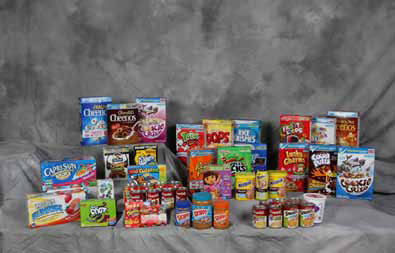I am the 2024 Joyce Lindower Wolitzer ’76 and Steven Wolitzer Seminar speaker and will be at Cornell for events connected with it. My Wolitzer talk, “Food Politics 2024: An Agenda for Action” is at 4:45 p.m. in 700 Clark Hall, followed by a book signing. No registration necessary, just come!
Surprise! Most “better-for-you” kids’ foods aren’t
The Oakland-based Prevention Institute has just released its new research report: Claiming Health: Front-of-Package Labeling of Children’s Food. The report summarizes the Institute’s investigation of whether kids’ foods with “better-for-you” front-of-package labels meet dietary recommendations and nutrition standards.
Bottom line: they don’t.
Researchers bought 58 kids’ food products made by companies who have promised to meet certain nutritional criteria.  All had front-of-package labels that indicate healthier options.
All had front-of-package labels that indicate healthier options.
The researchers measured the contents of these foods against a fairly standard—and quite generous—set of nutrient criteria.
The criteria allow products to have up to 25% of the calories from added sugars, up to 480 mg of sodium, and as little as 1.25 grams of fiber per serving.
Even so, the data show that:
- 84% of the study products could not meet one or more of the nutrient criteria
- 57% of the study products were high in sugar
- 53% of the study products were low in fiber
- 93% of cereals were high in sugar and 60% were low in fiber
- 36% of prepared foods and meals were high in sodium, 24% were high in saturated fat, and 28% were low in fiber
- 90% of snack foods were high in sugar, and 90% were low in fiber
Nutrient criteria make it easy to game the system, and front-of-package labels do exactly that.
The Institute of Medicine (IOM) will soon release its second report on front-of-package labels, this one recommending what the FDA should do about them. Let’s hope the IOM committee pays close attention to this report.
Claiming Health makes it clear that without rigorous nutrient standards, plenty of not-so-good-for-you foods will be labeled as better for children.
As I keep saying, alas, front-of-package labels, like health claims, are about marketing, not health.

